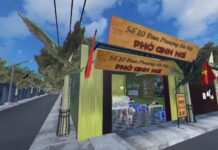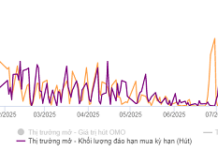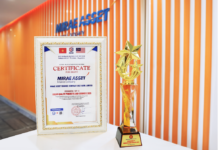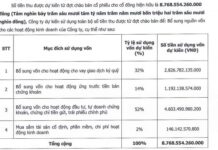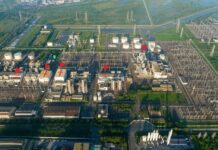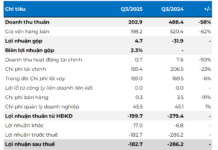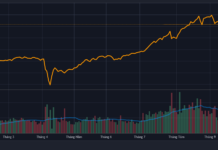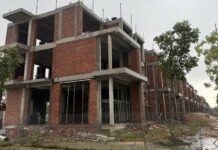Recently, the Deputy Prime Minister signed Decision No. 1003/QD-TTg, issued on September 19, 2024, approving the plan to implement the master plan for Long An province for the 2021 – 2030 period, with a vision towards 2050.
Accordingly, Long An province prioritizes investing in infrastructure projects with great spillover effects, promoting connectivity between the Southeast region and the Mekong Delta. At the same time, it develops intra-regional infrastructure associated with two economic corridors (the Vanh Dai 3 and 4 ring roads in Ho Chi Minh City and the southern development corridor, namely Provincial Road 827E).
The province sets the goal of becoming an industrial province by 2025, serving as a gateway on the urban-industrial economic corridor of the Mekong Delta, connecting to Ho Chi Minh City and the Southeast region. It also aims to be an important hub for trade cooperation with Cambodia, fostering rapid and sustainable socio-economic development.
The priority sectors for investment attraction in the province include high-tech processing and manufacturing industries in industrial parks and clusters, as well as renewable energy.

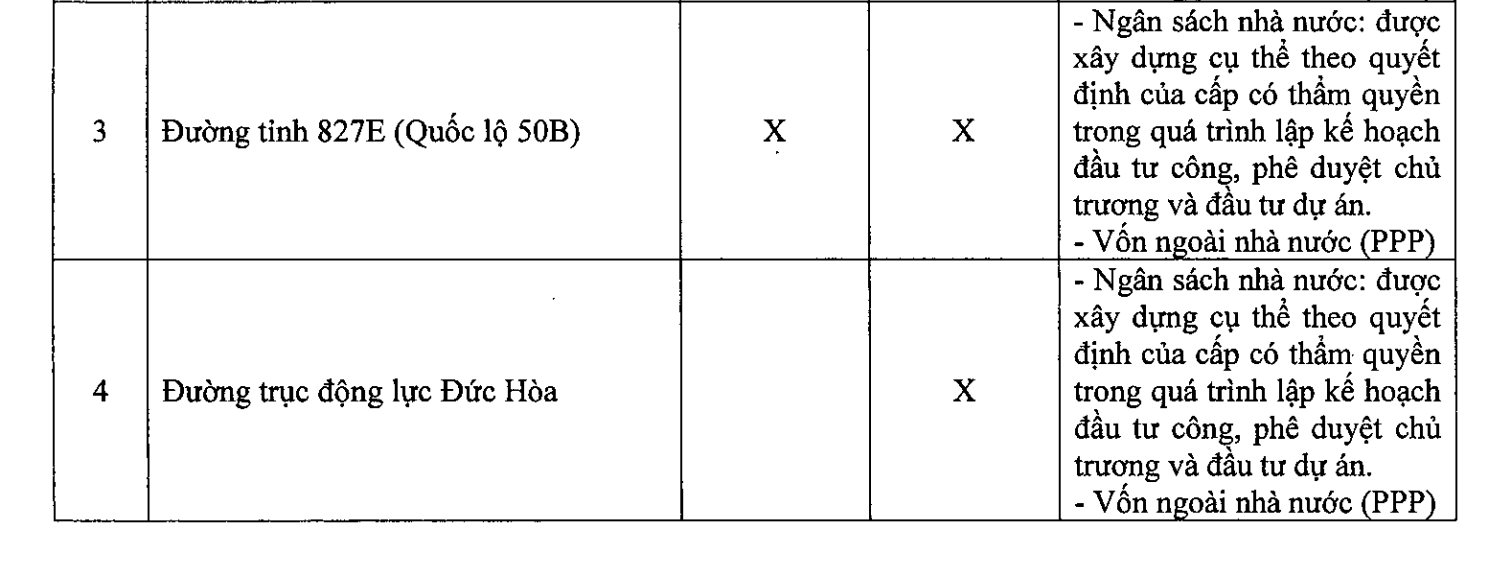



Transport infrastructure projects prioritized by Long An for the 2021-2030 period.
In the coming time, the province will focus on strengthening the electricity grid infrastructure, as well as healthcare, education, and social welfare facilities. It will also develop urban technical infrastructure to attract private and foreign investment.
In addition, human resource development is one of the key tasks of Long An province. To that end, the province will attract high-quality human resources and skilled labor, in line with the labor structure shift. It will also implement policies to attract labor, especially high-quality labor, while ensuring the material and spiritual life of workers who live and work there long-term.

According to the plan, the Vanh Dai 3 ring road section passing through Long An will be technically opened to traffic in October 2025 and completed for use in 2026.
In fact, Long An, and the western region in general, have continuously invested in transportation infrastructure. In 2024, Long An province was allocated 2,886 billion VND for transportation infrastructure projects in the area, focusing on key projects with regional connectivity. This has created positive effects on the real estate market, attracting major investors to develop large-scale projects.
Specifically, the Vanh Dai 3 ring road project in Ho Chi Minh City, with a section passing through Long An province, was started in June 2023, with a length of 6.84km. The starting point is at the boundary between Ho Chi Minh City and Long An, and the endpoint is at the intersection between Ben Luc – Long Thanh expressway and Ho Chi Minh City – Trung Luong expressway, passing through Ben Luc district. According to the plan, the Vanh Dai 3 section in Long An will be technically opened in October 2025 and completed for use in 2026.
Once completed, the entire Vanh Dai 3 ring road will be over 75km long, connecting Long An with Ho Chi Minh City, Dong Nai, and Binh Duong. This road not only connects the transport network in the key economic region of the South but also opens up new spaces to promote the development of logistics, industrial parks, and new urban areas.
Moreover, the Luong Hoa – Binh Chanh road section passing through Long An has been started and will be completed by 2025. This is a driving force for the province’s development, providing a faster connection to Ho Chi Minh City and other areas. When completed, it will take only 5 minutes to travel from Ben Luc to Ho Chi Minh City. In the future, this route will also provide access to key national transportation projects such as the Vanh Dai 3 ring road in Ho Chi Minh City.
In addition, the province is expediting the construction of Provincial Road 823D and Provincial Road 830E to facilitate inter-regional connectivity.
Besides infrastructure, Long An plans to attract investment in 27 technical infrastructure projects in industrial clusters. By 2030, the entire province will have 51 industrial parks covering nearly 12,500 hectares. At the same time, the province also plans to develop 28 new industrial clusters with a total area of more than 1,800 hectares. With this scale, Long An becomes the second locality in Vietnam (after Binh Duong) in terms of industrial park area, creating great conditions and opportunities for investment attraction.
It can be seen that the socio-economic development and continuous infrastructure investment have driven real estate market demand in Long An. However, well-planned urban projects in this area are still quite limited. Recently, some large-scale land investors have continued to invest and introduce high-quality products to the market, meeting diverse customer needs.
One notable project is the 355-hectare Waterpoint urban area by Nam Long Group in Ben Luc, Long An. In addition to the completed subdivisions with residents, the developer recently launched the Grand Villa in the exclusive The Aqua compound and the Park Village with limited units, priced from 12 billion VND per unit, along with attractive incentives. The presence of internal utilities such as EMASI Plus school, polyclinics, and food stores has further enhanced the value of this urban area.
Another notable project is the 100-hectare LA Home eco-urban area and the 400-hectare Prodezi eco-industrial park, developed by Prodezi. Both projects are currently under construction and are expected to be operational by 2025. The eco-industrial and eco-urban development model provides advantages for these projects. Residents will not only enjoy a better living environment but also have potential business opportunities in the near future.
The LA Home eco-urban area consists of 6 subdivisions, featuring green landscapes and natural canals. The recently launched LA Sol subdivision offers a range of products, including shophouses, villas, and canal-view townhouses. Notably, LA Sol also has a prime location on Luong Hoa – Binh Chanh Street and DT830, providing easy connectivity to Ho Chi Minh City, making it a highly sought-after project in the market.
Commenting on the impact of transportation infrastructure on the real estate market, Mr. Vo Huynh Tuan Kiet, Director of Residential CBRE Vietnam, said that convenient transportation connections have brought Ho Chi Minh City and its neighboring areas closer together. This has stimulated the demand for second homes, creating bright spots in the real estate market in certain areas.
According to Mr. Kiet, the government has planned to invest heavily in infrastructure in the southern region, including airports, ring roads, and expressways. These infrastructure projects will drive the development of decentralized urban areas, as the land fund in the central area is limited and costly. This presents opportunities for areas like Binh Duong, Long An, and districts on the outskirts of Ho Chi Minh City, such as Binh Chanh and Cu Chi.
However, the expert noted that the real estate market is undergoing a process of self-correction. Investors should be cautious about projects that lack legal completeness and avoid excessive financial leverage.
“Planning for Prosperity: How Strategic Urban Development Attracts Premier Projects and Investors”
On September 22, Prime Minister Pham Minh Chinh attended the Conference on Announcing the Planning and Investment Promotion of Bac Ninh Province. According to the Prime Minister, planning plays a leading role in guiding sustainable development. Good planning attracts quality projects and investors, ultimately resulting in successful outcomes.
The Province Next Door to Hanoi is Getting an Aeon Mall: A $190 Million Project in the Works
At the Conference on the Announcement of the 2021-2030 Planning Period, with a vision towards 2050, and the Promotion of Investment in Bac Ninh Province in 2024, AEON Mall Vietnam Co., Ltd. was presented with a Memorandum of Understanding (MoU) for the development of the AEON Mall commercial project in the 2024-2025 period in Bac Ninh Province, with a total expected investment capital of 190 million USD.





